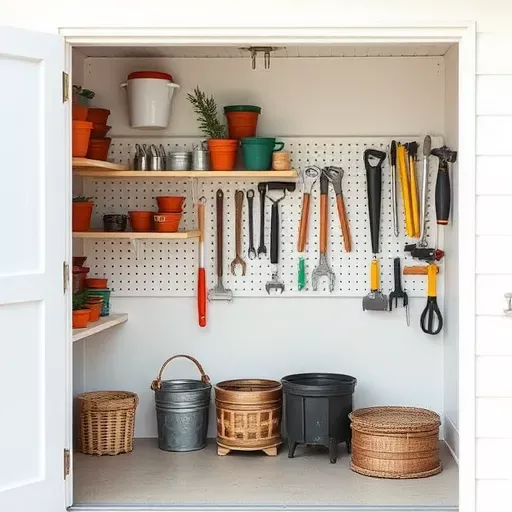So, you’re thinking about building the perfect garden shed? Whether you’re after a space to neatly store garden tools, or dreaming of a backyard retreat, getting your shed just right can make all the difference. There’s a lot to consider, from picking the right materials that can handle the Aussie climate to choosing a design that complements your home. Let’s dive in and explore how you can create a shed that’s both practical and looks good too!

Choosing the Right Shed Materials for Aussie Climates
Durability and Weather Resistance
Australia’s climate can be pretty harsh, from intense sun to torrential downpours, so choosing materials that stand up to these conditions is crucial. Steel and galvanised metal are great options as they resist rust and are super durable. Wooden sheds can also be a fantastic choice but make sure they’re treated to withstand moisture and prevent rot. Essentially, you want materials that promise a long life so your shed doesn’t become a weekend repair project every few months.
Sustainable Material Options
If you’re keen on making eco-friendly choices, there are plenty of sustainable materials to consider. Look for timber that’s certified by bodies like the Forest Stewardship Council (FSC) to ensure it’s sourced responsibly. Recycled plastic and metal are also options that not only help the planet but reduce maintenance since they’re designed to last. Using local materials where possible can reduce your carbon footprint and support Aussie businesses, which is always a win!
Exploring Different Shed Design Styles
Aesthetic Appeal vs. Functionality
It’s all well and good for your shed to look pretty, but it must function well too. Consider what you’ll be using your shed for—do you need more windows for light, or more wall space for shelving? A modern style might include sleek lines and minimalistic features, perfect for a tidy look. However, a classic, rustic design could offer charm and warmth. Finding that sweet spot between appearance and practicality will ensure your shed meets all your needs.
Matching Shed Design with Your Home
You wouldn’t want your shed to stick out like a sore thumb in your backyard. The design should complement your home, perhaps by echoing similar colours or architectural elements. For instance, if your home features weatherboard cladding, consider using similar materials for your shed. With a bit of thought, you can ensure your shed feels like a natural extension of your house, creating a cohesive outdoor space.

A harmonious blend of modern and rustic shed designs that complement any home.
Benefits of Weather-Resistant Sheds
Advanced Materials for Maximum Protection
Investing in advanced materials can make your shed almost invincible against the weather. Look for UV-resistant coatings on roofing materials to prevent sun damage. Some modern materials even include multi-layer protection to combat corrosion and fading. This means more time enjoying your outdoors rather than fixing up shed damage.
Techniques for UV and Rain Damage Prevention
Simple strategies can make a world of difference in keeping your shed in tip-top shape. Regularly applying a fresh coat of waterproof sealant to wooden sheds can prevent rain damage. Roof overhangs can also protect walls from the harshest sun and rain. Don’t forget proper ventilation—this helps reduce humidity and adds another layer of protection against decay.
Essential Shed Construction Tips for a Sturdy Structure
Step-by-Step Construction Guide
- Planning and Permits: Before any spade hits the ground, check local council regulations. You might need a permit, and knowing this upfront can save headaches down the line.
- Foundation: Start with a solid foundation—concrete slabs or timber bearers can offer great stability.
- Framing and Walls: Use treated timber or steel for robustness. Ensure your frames are square for everything to fit snugly.
- Roofing: Choose weather-resistant materials and secure them tightly to withstand strong winds.
- Finishing Touches: Paint or treat your shed to add that final layer of protection.
Avoiding Common DIY Mistakes
One of the biggest DIY pitfalls is underestimating the time and tools needed. Make sure you’re well-equipped before kickstarting your project. Another trap is skimping on quality materials to save money—but this can cost you more in repairs down the track.
Selecting the Perfect Shed Location
Your shed’s location is just as important as how you build it. Pick a spot with good drainage and easy access. Think about how the sun moves across your yard—too much exposure can lead to overheating while too little might make the inside damp and gloomy.
Key Features of Effective Outdoor Storage Solutions
Maximising Space for Garden Tools
Clearing up garden clutter is one of a shed’s best perks. Using vertical space for shelving and hanging tools can maximise storage without cluttering your floor space. Axe, spade or bike hangers make it easy to keep everything in its place!
Efficient Organisation Techniques
An organised shed saves time and stress. Categorise your tools and equipment by type or frequency of use, using labelled bins to keep everything tidy. Installing pegboards on walls not only keeps things visible but also within arm’s reach.
Must-Have Storage Accessories
A few clever accessories can transform a cluttered shed into an organised haven. Consider adding:
- Built-in shelves: Great for stacking pots, fertilisers, and small tools.
- Magnetic strips: Perfect for keeping your metal tools in sight.
- Tool hooks and rails: Simplifies hanging everything from the garden hose to large tools.

An organised outdoor shed showcasing effective storage solutions for garden tools.
Shed Foundations: Ensuring Stability and Longevity
Types of Foundations and Their Benefits
There’s no one-size-fits-all when it comes to foundations. Concrete slabs provide a durable and level base, ideal for heavy sheds. Timber or plastic foundations are easier to set up and can be a good choice for smaller, lighter structures.
Preparing the Ground Properly
Prepping the land properly makes all the difference. Start by clearing your site of vegetation and levelling the ground. Utilising a compacted gravel base beneath your foundation can improve drainage and help prevent shifting over time.
Avoiding Foundation Pitfalls
Skipping drainage considerations is a common mistake, leading to damp and unstable conditions. Another is picking an unsuitable foundation type for the size and weight of your shed. Always think long-term stability!
Integrating Your Shed into the Backyard Landscape
Cohesive Design Ideas
Your shed doesn’t have to be just functional; it can also enhance your garden’s beauty. Choose landscaping elements like small shrubs or climbing plants that grow around your shed seamlessly. This softens the look and helps it blend into the existing environment.
Maintaining a Natural Aesthetic
Natural materials like timber and stone can help your shed harmonise with nature. Consider adding a green roof, which not only looks fantastic but supports sustainability by insulating your shed and absorbing rainwater.
Blending with Existing Structures
If you’re lucky enough to have other structures like a pergola or gazebo, align your shed’s design with these. This might mean matching colours or using complementary materials. It’s about creating a landscape that’s pleasing to the eye and feels connected.
Nearly There! Top Tips for Your Shed Project
- Plan Ahead: Always check permits and regulations first.
- Quality Materials: Invest in materials that can withstand Aussie weather.
- Maximise Space: Use every bit of vertical and horizontal space inside.
- Consider Lighting: Adding windows or solar lights can make your shed more welcoming.
- Stay Organised: Use shelves and pegboards to keep everything tidy.
Common Mistakes to Avoid
- Skipping proper planning and permit checks.
- Choosing an unsuitable site or foundation for your shed.
- Using subpar materials that degrade quickly.
- Forgetting to waterproof and seal your shed regularly.
- Overlooking the integration of your shed with the existing landscape.
When you put these tips into practice, you’re more than just erecting a garden shed—you’re creating a functional, beautiful space that enhances everyday outdoor living. By thoughtfully considering materials, design, and placement, your shed will serve as a sturdy, attractive addition to your backyard for years to come. With some planning and a dash of creativity, you can look forward to a shed that’s truly the crown jewel of your garden!
